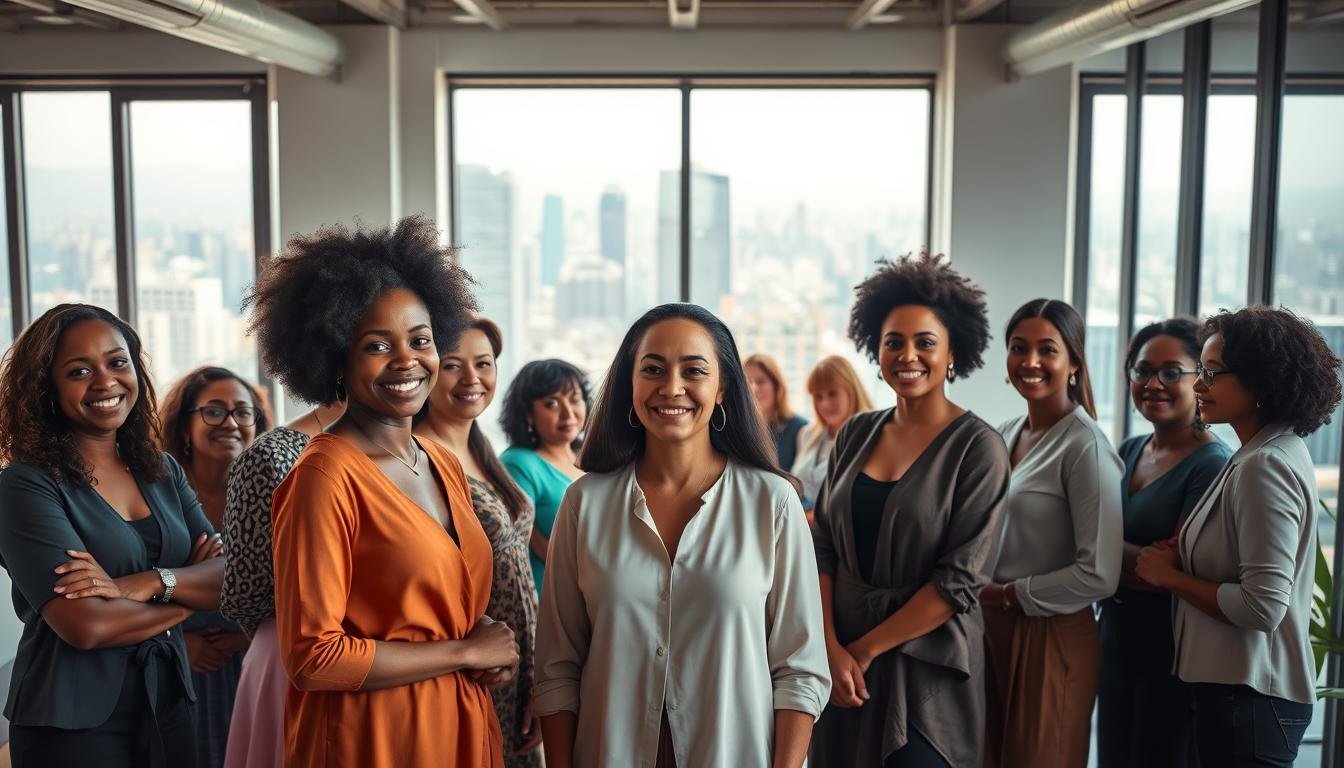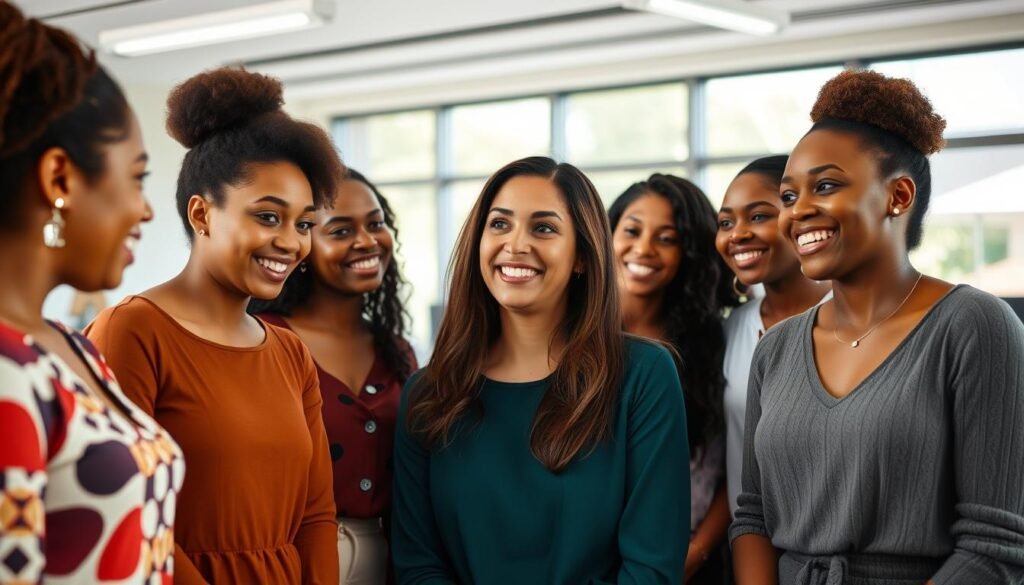What if supporting one cause could lift entire communities out of poverty? Nonprofits like the Global Fund for Women and Women for Women International prove it’s possible. These groups tackle systemic barriers—from gender-based violence to unequal education—while creating ripple effects that reshape societies.
Over 50 countries benefit from their programs, offering resources like job training, legal advocacy, and healthcare. Their work doesn’t just uplift individuals—it strengthens families and economies. For example, Women for Women International has helped over 500,000 marginalized individuals rebuild their lives since 1993.
This article highlights organizations driving measurable progress in gender equality. You’ll learn how they address critical issues like poverty and access to education. Discover actionable ways to contribute, whether through donations, volunteering, or advocacy.
Key Takeaways
- Nonprofits like Global Fund for Women operate in over 175 countries, addressing urgent challenges.
- Gender equality initiatives often reduce poverty rates and boost economic growth.
- Programs focus on education, healthcare, and legal rights to create lasting change.
- Over 75% of participants in these programs report improved financial stability.
- Readers in the U.S. can support through donations, partnerships, or awareness campaigns.
Introduction to Empowering Women Globally
Imagine a world where every girl’s potential isn’t limited by her circumstances. Today, 1 in 3 females globally faces physical or sexual violence, while 130 million girls remain out of school. These gaps don’t just harm individuals—they slow economic growth and destabilize communities.
The Urgency of Gender Equality
Political representation tells a similar story. Only 26% of parliamentary seats worldwide are held by females. In rural areas, limited healthcare access increases maternal mortality—94% of these deaths occur in low-resource regions.
Economic exclusion compounds these issues. Women earn 23% less than men globally, and 600 million face legal barriers to job opportunities. Equality isn’t a luxury—it’s a catalyst for GDP growth and innovation.
How Nonprofits Are Transforming Lives
Groups like Girls Not Brides combat child marriage, delaying unions for 2 million girls since 2011. CARE’s microloan programs have lifted 92 million from poverty, proving targeted support creates generational change.
Mentorship initiatives bridge education gaps. In Nigeria, STEM programs increased girls’ tech enrollment by 40%. When communities invest in equality, literacy rates rise and infant mortality drops by 20% within a decade.
The fight demands collective action. From donors to volunteers, every effort reshapes what’s possible. Progress isn’t instant—but it’s inevitable when we prioritize fairness.
Understanding Women Empowerment Organizations
Behind every thriving community lies a foundation of strategic support systems. These groups focus on dismantling barriers through education, economic inclusion, and policy reform. Their missions prioritize equality by addressing systemic gaps in access to opportunities.
Defining the Mission and Impact
At their core, these entities aim to equip individuals with tools for self-sufficiency. CARE International’s microloan initiatives, for example, enabled 92 million people to escape poverty since 2015. Measurable outcomes—like 40% higher school enrollment in regions with mentorship programs—show how structured efforts create waves of change.
Key Services and Resources Offered
From vocational training to healthcare, support systems address multiple needs simultaneously. UN Women connects participants with financial services, while local partners provide skill-building workshops. Over 70% of beneficiaries report increased income within two years of joining such resources.
Legal advocacy and digital literacy courses further bridge gaps. In Bangladesh, textile trade education boosted employment rates by 33% among participants. These layered services prove that holistic approaches yield lasting results.
Spotlight on Women Empowerment Organizations Driving Change
Progress thrives where opportunity meets action. Three groups stand out for their groundbreaking approaches to tackling inequality through targeted initiatives. Their strategies blend funding, education, and policy shifts to create measurable improvements.
Global Fund for Women and Their Grants
With 12,000+ grants distributed across 175 countries, this group fuels grassroots movements. Their funding supports health clinics in Nepal and legal aid networks in Brazil. Over 60% of recipients expand their programs within two years, creating cascading benefits for families.
Women for Women International’s Transformative Programs
Operating in conflict zones like Rwanda and Afghanistan, their year-long training equips participants with vocational skills. Graduates see a 200% income jump on average. One Nigerian alumna now employs 15 others through her textile cooperative—proof that support women efforts spark economic chains.
UN Women’s Global Advocacy Efforts
The HeForShe campaign has engaged 2.4 million men as equality allies since 2014. Beyond awareness, they push policy reforms—like Kenya’s 2021 law banning child marriage. Their data-driven approach ensures change reaches those most excluded from systems.
These groups prove that strategic investments in girls and communities yield exponential returns. Every dollar spent on education generates $5 in long-term economic growth, reshaping what’s possible for future generations.
Innovative Initiatives and Programs Making a Difference
Breaking cycles of inequality requires more than goodwill—it demands smart, scalable solutions. Forward-thinking programs now blend education, mentorship, and health advocacy to address multiple barriers at once. This integrated approach creates self-reinforcing cycles of progress, lifting entire families toward stability.
Education, Mentorship, and Skills Training
Mobile-based learning platforms like EducateHer deliver STEM courses to 200,000 girls in remote areas. Paired with virtual mentorship, these initiatives boost confidence and job readiness. In Kenya, coding bootcamps increased tech-sector employment by 27% among graduates.
Vocational training centers teach in-demand skills, from solar engineering to agribusiness. CAMFED’s mentorship model links students with alumni networks, resulting in a 68% income jump for participants. These education strategies prove knowledge is currency in shifting economic dynamics.
Health Advocacy and Economic Empowerment
Telehealth platforms connect rural communities with health professionals, reducing maternal mortality by 40% in pilot regions. Microloan programs tied to medical check-ups ensure holistic support—like BRAC’s model in Bangladesh, where 81% of borrowers invest profits into their children’s schooling.
Textile cooperatives in Guatemala train members in financial literacy while producing goods for global markets. Participants triple their earnings within 18 months, funding better nutrition and housing. When skills development meets health access, families break poverty’s grip permanently.
How to Support and Engage with Empowerment Efforts
Real change begins when action meets intention. Whether you contribute time, funds, or influence, your involvement strengthens initiatives tackling systemic barriers. Here’s how to make a tangible difference.
Volunteer, Donate, and Advocate for Change
Nonprofits like Women Deliver offer virtual volunteering roles—from mentoring to social media campaigns. Monthly donations as small as $25 fund job training programs that break cycles of poverty. Advocacy matters too: sharing stories on platforms like UNICEF’s Voices of Youth amplifies marginalized voices.
Companies can match employee contributions, doubling impact. For hands-on work, join local donation drives for school supplies or hygiene kits. These efforts address urgent needs while building long-term stability.
Building Partnerships with Local Communities
Effective programs prioritize access to local insights. Partner with grassroots groups to identify gaps in resources or education. In Texas, the nonprofit Girls Inc. collaborates with schools to provide STEM workshops, tailored to community needs.
Businesses might sponsor skill-building events or offer pro bono services. Sustainable change happens when global support aligns with regional priorities. Start by researching trusted networks in your area—your involvement could spark a chain reaction of progress.
Conclusion
Creating lasting gender equality requires more than awareness—it demands action. From microloan projects to STEM mentorship, programs worldwide prove targeted education and resources break cycles of poverty. When girls gain access to schools or job training, entire communities thrive.
Nonprofits like the Global Fund for Women show how strategic initiatives create ripple effects. Their grants fund health clinics and legal aid networks, while UN Women’s policy reforms protect vulnerable families. Grassroots efforts matter equally—local partnerships often identify urgent needs faster.
Every contribution accelerates progress. Donations fund vocational courses, while advocacy shifts cultural norms. Volunteering time or skills bridges gaps in access to technology or healthcare.
The world has seen what’s possible when we invest in girls and fairness. Join these efforts today—support a scholarship, share stories, or partner with a trusted nonprofit. Together, we build futures where potential isn’t limited by gender.
FAQ
How do these groups help girls access education?
Many nonprofits partner with schools to provide scholarships, mentorship, and safe learning environments. For example, the Global Fund for Women funds grassroots projects that remove barriers like poverty or cultural norms, ensuring girls stay in classrooms.
What role do nonprofits play in fighting poverty?
Organizations like Women for Women International offer vocational training, microloans, and business workshops. These resources equip individuals with skills to earn sustainable incomes, lifting families out of economic hardship.
Can men support gender equality initiatives?
Absolutely. Programs led by UN Women encourage men to advocate for equal opportunities in workplaces and communities. Allies can donate, volunteer, or challenge harmful stereotypes to drive systemic change.
How do mentorship programs create lasting change?
Pairing experienced professionals with young leaders builds confidence and career networks. Initiatives like Vital Voices connect mentees with role models, fostering leadership skills that ripple through future generations.
What health services do these organizations provide?
Many groups focus on reproductive care, mental health support, and disease prevention. For instance, Planned Parenthood offers affordable screenings and education, empowering individuals to make informed decisions about their well-being.
Why is economic independence critical for communities?
When individuals gain financial literacy and job opportunities, they reinvest in local economies. Organizations like BRAC highlight how microloans and entrepreneurship reduce inequality and strengthen entire regions over time.








